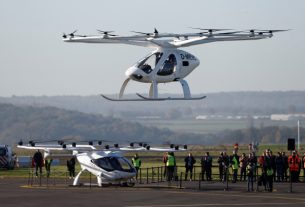The Douro River is one of Portugal’s best-known waterways. It flows through the region that produces the famous port wines, and attracts a growing number of tourists each year. That brings economic benefits, but also problems.
“Passenger ships are becoming more popular as tourists discover the area,” said Filipe Martins from APDL, the organisation that administers the sea ports of Leixões and Viana and the Douro’s inland waterway. “That’s good. But it’s also putting more environmental pressure on the river.”
For example, some tourist boats choose to simply discharge their wastewater into the river illegally, instead of emptying tanks in ports and paying for it.
“It’s sad. It pollutes this beautiful river,” said Martins. This is just one example showing there is room for improving the management of Europe’s waterways so that they are kept healthy and sustainable.
An EU-funded initiative named ReNEW, bringing together researchers from universities, research institutes, public organisations and companies from 11 European countries, is already working to improve the performance and sustainability of inland waterways.
ReNEW focuses on developing and testing technologies to support the Inland Waterway Transport (IWT) sector in its transition to a more sustainable, climate-resilient, and digitally enabled future.
Europe’s inland waterway network spans some 41 000 kilometres and transports around 550 million tonnes of cargo each year.
With over 16 000 vessels, inland navigation plays a key role in freight transport and cross-border trade, connecting major industrial regions across the continent. The sector also supports passenger transport and cruising, which are growing in popularity in many parts of Europe.
“
Inland navigation has the capacity to transport more cargo and reduce reliance on CO₂-intensive road transport.
“Europe has a vast inland waterway network, but its share in freight transport has remained relatively stable. This shows that its potential is not fully realised,” said Janeta Toma, general manager of the European Inland Waterway Transport Platform and ReNEW coordinator.
Realising the full potential of inland waterways, she said, requires investment, the development and roll-out of innovative technologies, supportive policy frameworks, appropriate market incentives and active engagement from key stakeholders.
Digital rivers
The researchers’ work started in September 2022 and will continue until September 2025, aiming to help Europe unlock the full potential of its waterways in a smart and sustainable manner.
One of the key tools being developed are so-called digital twins – a virtual representation of inland waterway infrastructure and operations.
These models are created by combining data integration and climate prediction modelling with water level sensors, weather forecasts and ship tracking, as well as real-world testing in four so-called living labs.
The compiled data creates a digital copy of a river. Using these systems, scientists can monitor and predict what a river will do, and, for example, better respond to emergencies such as floods. That is the focus of the Douro living lab in Portugal.
The living lab in Ghent, Belgium, is developing a multifunctional smart terminal hub, which integrates different transport modes, as well as sensors to monitor water levels and air and water quality.
In the third living lab, researchers are creating a platform to track the progress of ship-borne cargo. Meanwhile a fourth living lab is building and testing low- and zero-emissions autonomous barges. Those two labs have hubs in Belgium, Germany, France and the Netherlands.
Partners in these initiatives include research centres and institutes such as imec from Belgium and Sintef from Norway, but also the port authority APDL and Ireland’s Konnecta Systems.
“The solutions we are developing represent some of the most strategic contributions of the ReNEW project,” said Toma. “They reflect our ambition to deliver practical, scalable innovations that strengthen the IWT sector.”
Blockchain to halt illegal dumping
One of those solutions is currently being tested on the Douro. As part of ReNEW’s work, APDL installed sensors on the wastewater tanks of a number of tourist ships sailing along the river.
These sensors register the water levels minute by minute, and this information, along with the ship name, time and current coordinates is stored in an immutable way in a blockchain helping to detect any rapid discharge of wastewater in places where this should not happen.
If a discharge occurs outside of a wastewater collection point, the decrease in tank volume and the ship’s coordinates will be used to identify the misdeed as this information is automatically logged on a blockchain – a publicly shared collection of data.
“In this way, it’s immutable, it cannot be changed,” said Martins. “These records are also kept forever. Nobody can tamper with the data.”
The system automatically issues a fine to the ship operator who illegally discharges wastewater, reducing administrative burden and immediately punishing offenders.
“
Environmentally compliant shipping companies are having trouble competing with operators who don’t always follow the same standards.
If the test proves successful, the system could become mandatory for all tourist ships on the river. Martins hopes this will help protect the Douro, but also provide some economic benefits.
“Right now, there is an uneven playing field,” he said.
“Honest companies pay for handling their wastewater while polluters don’t, if they aren’t caught. Environmentally compliant shipping companies are having trouble competing with operators who don’t always follow the same standards.”
The researchers from APDL have also installed sensors along the riverbed and combined their data with various water and meteorological models to create a digital twin.
With it, they hope to better predict floods and droughts, which should benefit tourism, transport and agriculture. These kinds of technologies should also help to stimulate Europe’s inland waterways and create new opportunities.
“Inland navigation has the capacity to transport more cargo and reduce reliance on CO₂-intensive road transport,” said Toma.
“With the right investment and support, it can make a much bigger contribution to a sustainable and efficient European transport system.”
Research in this article was funded by the EU’s Horizon Programme. The views of the interviewees don’t necessarily reflect those of the European Commission. If you liked this article, please consider sharing it on social media.



